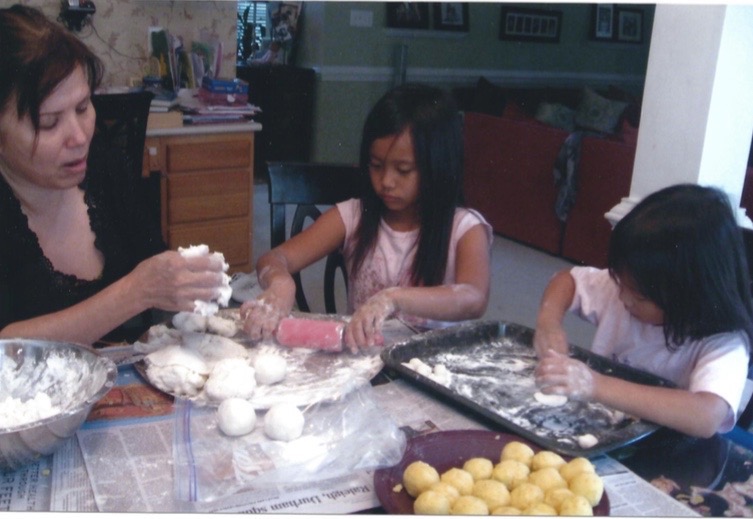Culture Collaboration
Year of the Rooster is among us
Making dough dumplings for a Vietnamese dessert called che, Kim Nguyen (left) enjoys teaching her grandaughters Mady Ignacio (middle) and Aly Ignacio (right) how to prepare Vietnamese dishes. Lunar New Year is a huge celebration for some and a household celebration for others but special nonetheless.
February 1, 2017
Vietnamese New Year is often referred to as Lunar New Year because it is based off the lunar calendar. According to the lunar calendar, the first day of the first month of 2017 is January 28. Vietnamese New Year is the most important celebration in Vietnamese culture.
2017 is year of the Rooster. There are twelve Vietnamese Zodiac animals that each have their own year and repeat every twelve years. For example, 2000 was year of the Dragon and 2012 was year of the Dragon again. The animals are ordered according to the Chinese Yin and Yang Theory. The yin or yang of the animals is determined by the odd or even number of their claws. The animals are then arranged in an alternating yin-yang (even/odd) sequence. Typically an animal has the same number of claws on its front and rear legs. However, the rat has four toes on its forelegs but five toes on its hind legs. Due to this, the Rat ranks first of the 12 zodiac animals because of its rarity. Following the rat is the ox, tiger, cat, dragon, snake, horse, goat or ram, monkey, rooster, dog, and lastly, the pig.
Sophomore, Mady Ignacio has been celebrating the holiday with her family for as long a she can remember. Her family, like many other Vietnamese families, celebrates with different kinds of food. They eat food such as Bánh tét, which is sticky rice with pork and mung bean inside, all steamed in banana leaf. Mooncakes are a very commonly eaten food on Vietnamese New Year. The Mooncakes are usually filled with mung bean or red bean. “There are a lot of special kinds of beans”, Mady adds. For 2007, year of the pig, Mady’s grandfather made Mooncakes in the shape of pigs.
On Vietnamese New Year, children receive Li xi from their elders. This is money in red envelopes with Chinese symbols on the outside. Li xi is considered lucky money as red signifies luck. Children receive this only after they wish their elders a happy New Year. “You have to wish your elders happy New Years but in a very formal way.” Mady said. For example, “Happy New Year, I hope this year is prosperous and full of good fortune.”
For the Vietnamese, this holiday brings a message of confidence in humanity; it brings redemption, hope and optimism.












